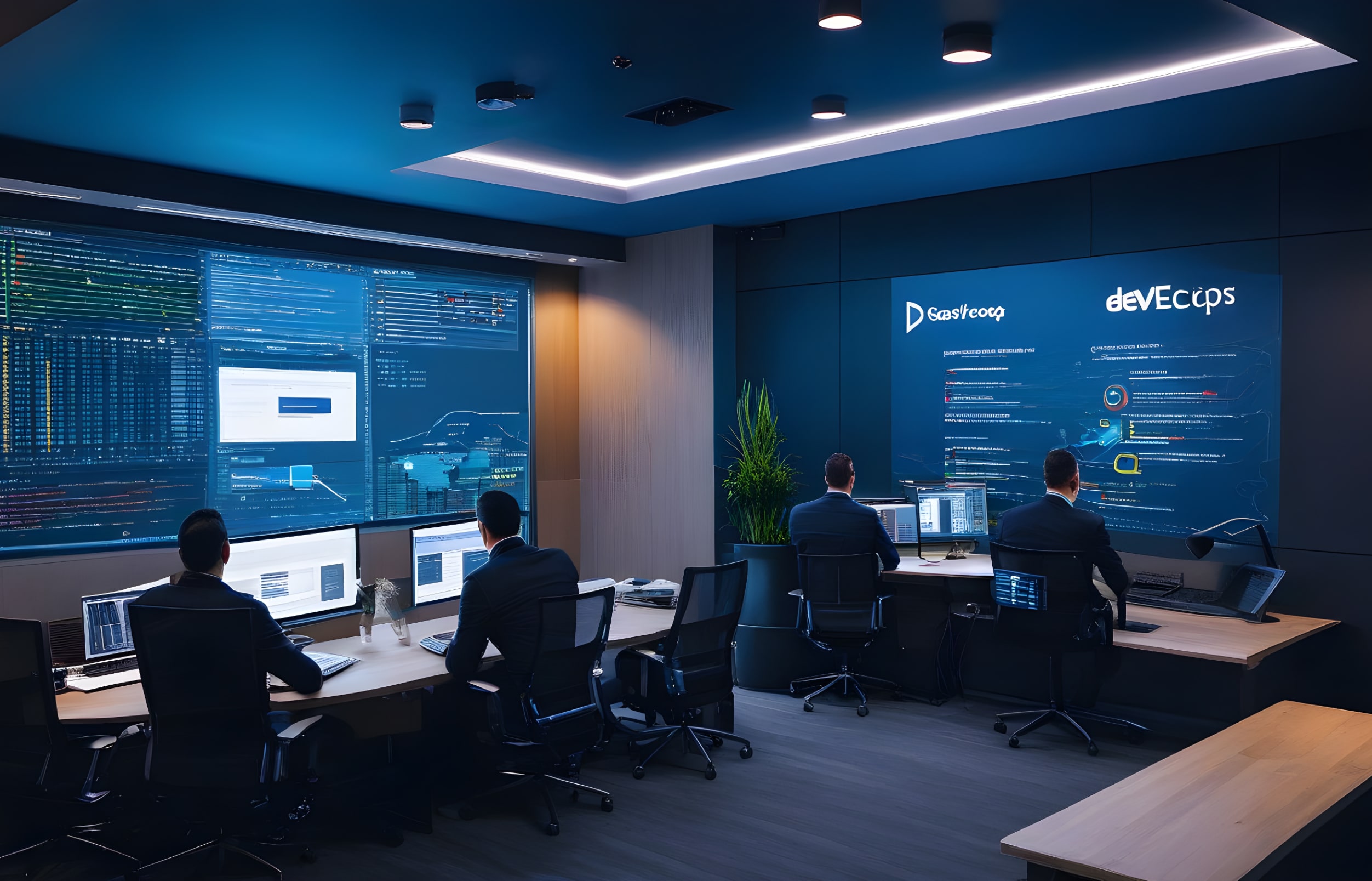Introduction
Security and development together make a new perspective called “DevSecOps”. This is like a change in our social practices about the software development cycle. The method is predicted to realize that security measures will have been carried out automatically. Everywhere you turn from the basic design of hardware to the software development process and release, it is evident that the process has been executed in a different manner.
In contrast to the traditional way of doing things, which is viewed as an addition to the product by a team that comes later, DevSecOps incorporates security naturally though all stages of the product life cycle. By integrating security while using DevSecOps and agile workflows, it allows software development to improve its security posture with continuous development. This fosters the atmosphere where different IT services teams such as development security and operating teams take up some legs of the work.

Understanding DevSecOps
DevSecOps is a word that melts Development, Security, and Operations, and it is a mindset, a particular way of thinking, plus a combination of methods that are supposed to infuse security to every step of the software development lifecycle (SDLC). The DevSecOps Model underlines the idea of shifting security left that involves securing the system at the very beginning rather than rolling it after traditional methods where security concerns are addressed in the later stages instead.
How has DevSecOps evolved through the years
In the past, security was often seen as a contractual stumbling block. Now more than ever that it is possible due to increased agile and DevSecOps adoption. This was because the security issues needed to be resolved after development. However, because it takes much time to do this required process, there are plenty of difficulties with the traditional method of resolving security issues during development.
Nowadays, the service-security dynamic is represented with the recent establishment of DevSecOps to fight-off all the problems and counter all security concerns. Realistically, security is thus no longer just a one-off component, rather, it is a continuous function that becomes a core element of expansion.
Main principles of DevSecOps
- Shift-left strategy: DevSecOps promotes tackling security concerns as early in the development lifecycle as feasible, ideally during the design stage.
- Automation: Continuous security testing, compliance checks, and code analysis are made possible by automation, which is essential to DevSecOps.
- Cooperation: By dismantling organizational silos and encouraging shared security responsibility, DevSecOps encourages cooperation between the development, security, and operations teams.
- Continuous feedback: Feedback loops are essential to DevSecOps because they allow for the prompt correction of security vulnerabilities and their continuous identification.
- Repeatable and adaptable processes: Mature DevSecOps Model are characterized by repeatable procedures. An adaptive and consistent security posture is facilitated by modern practices such as automation configuration management.
Benefits of DevSecOps
- Software delivered quickly and affordably-DevSecOps minimizes delays brought on by security concerns. It leads to software delivery that is both more economical and faster. Reparative evaluations are less necessary when there is integrated security. It also reduces the need for expensive post-mortem rework.
- Accelerated security vulnerability patching-Patching security vulnerabilities more quickly is made possible by the development cycle’s integration of vulnerability detection and patching. It also includes the ability to fix security flaws while reducing the amount of time that they are vulnerable to attacks.
- Automation for contemporary development-By including security checks in automated testing, DevSecOps Model conforms to contemporary development techniques. This guarantees that the security component is independent. It is also a crucial component of the development life cycle.
- Processes that are trustworthy and flexible-Well-developed DevSecOps Model implementations offer a basis for reliable security procedures. An organization’s ability to adapt is crucial to its development. Security changes may also be imposed upon them.
Some of the best practices for DevSecOps
Shift left: By moving security from the end to the beginning of the development process, you can adopt the shift left slogan. Cybersecurity experts are among them. early on in the cycle of development.
Security education: Promoting cooperation across development operations compliance teams is the ideal approach. This will facilitate the maintenance of a common comprehension of the security concepts. Applying security engineering techniques and compliance standards needs instruction from you.
Cultural Emphasis: It’s critical to foster an environment in the workplace that values communication and change. Sharing security duties is essential. Product development and ownership parity procedures must be promoted together.
Start small, iterate: Launch a DevSecOps Model with a modest, manageable scope at first, then progressively grow it in response to feedback and lessons gained.
Encourage a culture of safety: Foster an environment where everyone takes responsibility for security, stressing the value of security awareness and team-wide training.
Automate procedures related to security: To ensure consistent and timely security assessments, use automation to incorporate security testing, vulnerability scanning, and compliance checks into the development process.
Embrace cooperation: By dismantling organizational silos, creating cross-functional teams, and encouraging open lines of communication, you may promote cooperation across the development, security, and operations teams.
Set risk management as a top priority: This will help firms allocate resources more wisely by helping to identify and rank security issues according to likelihood and possible impact.
Observe and quantify: To track the success of DevSecOps Model, pinpoint areas for improvement, and convince stakeholders of the return on security efforts, use rigorous monitoring and metrics.
Challenges occurred in implementing DevOps
DevSecOps has many advantages, however putting this approach into practice has its own set of difficulties:
- Cultural Resistance: Teams used to traditional development methods may object to the shift to a DevSecOps culture, which calls for a mentality adjustment.
- Skill Gap: Companies might not have the development and security knowledge and experience needed to deploy DevSecOps successfully.
- Tool Integration: It can be difficult and time-consuming to integrate security solutions into current development workflows and CI/CD pipelines.
- Requirements for Compliance: For businesses in highly regulated sectors, it can be difficult to ensure regulatory compliance while preserving the agility of DevSecOps pipelines.
Reliable DevOps Support by Pedals Up
At Pedals Up, we take great satisfaction in being your reliable guide through the complicated world of DevOps. Understanding how important DevOps is to your operations, we are dedicated to providing dependable solutions that precisely match your business goals. We can help you if you’re an established company looking to streamline your development procedures or a startup hoping to grow quickly.
We understand that every company is different, with a distinct set of needs and obstacles. Because of this, we provide DevOps support in a customized manner, designing solutions to meet the unique requirements of your company. We have the know-how to help with infrastructure management, security upgrades, and pipelines for continuous integration/continuous delivery (CI/CD).
We are aware that in any DevOps environment, scalability, security, and stability are critical issues. We therefore strongly emphasize these fundamental ideas in all that we do. We have the knowledge and tools to support your success, whether it’s putting in place reliable monitoring and alerting systems to guarantee stability, carrying out exhaustive security assessments to protect your assets, or designing scalable infrastructure to accommodate your expansion.
Lastly
It is critical to take a proactive approach to security in the current threat scenario, as cyberattacks are growing more complex. Organizations may provide secure, high-quality software quickly by incorporating security into the DevOps pipeline using the architecture provided by the DevSecOps Model.
Through the adoption of DevSecOps Model, promoting cooperation, and utilizing automation, establishments can improve their security stance and expedite their software development procedures. Organizations that prioritize security will surely gain a competitive edge in the digital era as DevSecOps continues to gain traction.




